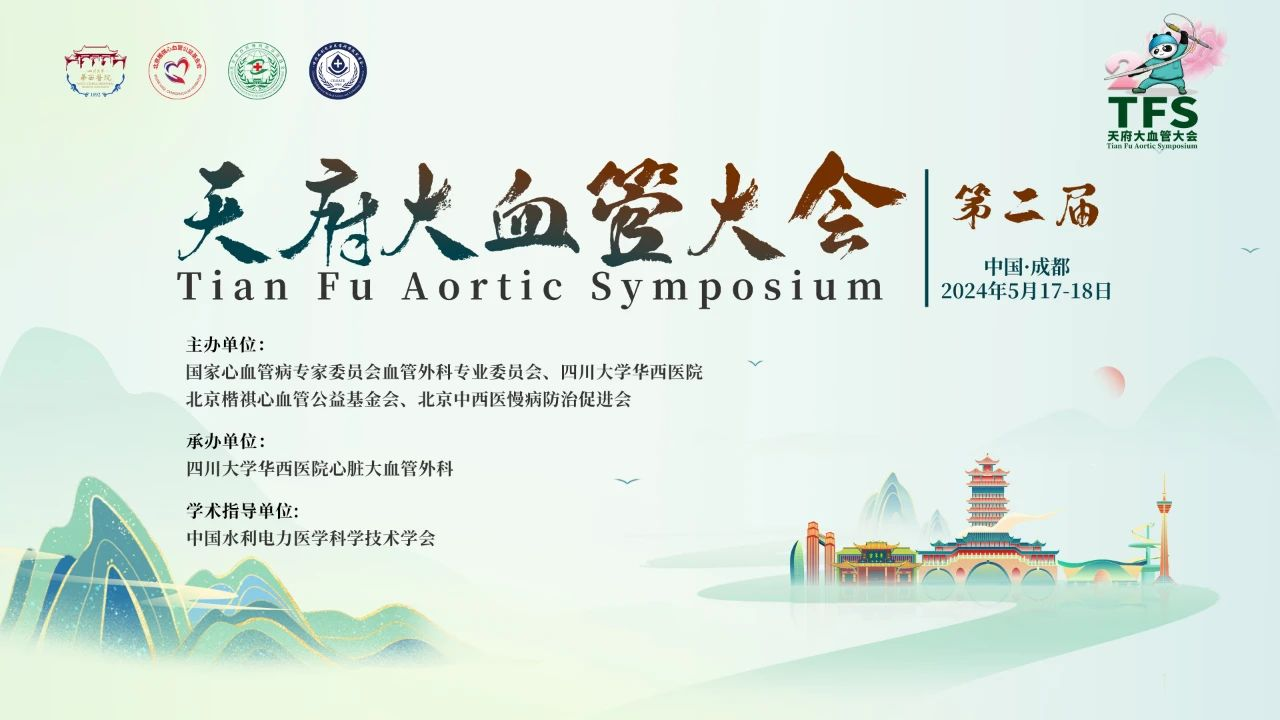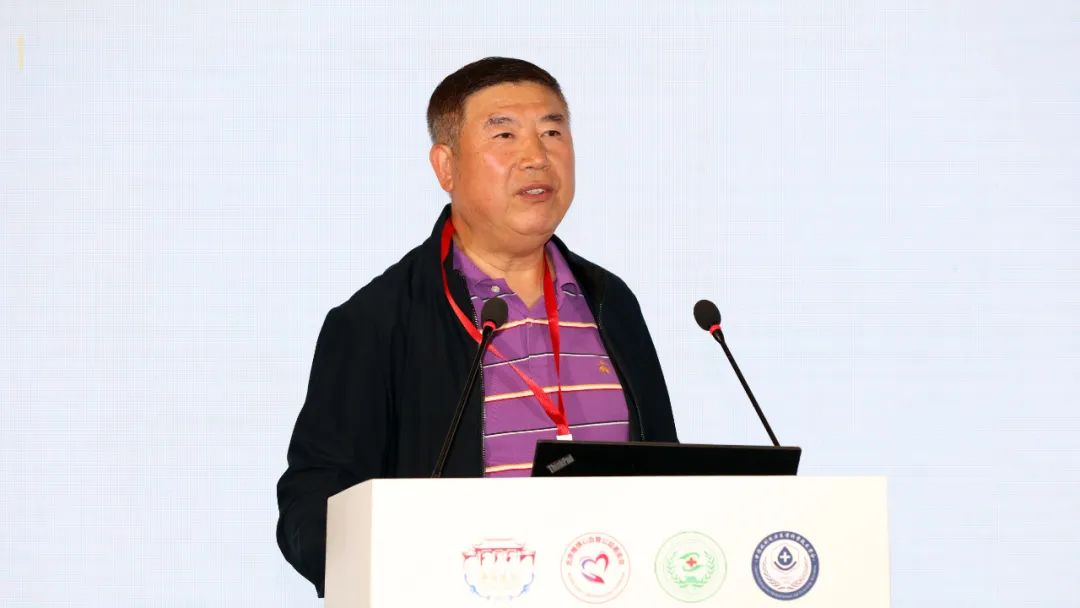
Entering a New Era in Aortic Surgery
Chinese aortic surgery has transitioned from the era of grueling and hazardous operations to a focus on patient quality of life. The scope of surgery has expanded from local aortic segments to the entire aorta, and the surgeon demographic has shifted from senior to younger practitioners. Moreover, aortic emergency surgeries are becoming routine. On May 18, 2024, at the 2nd Tianfu Vascular Conference (TFS 2024) held in Chengdu, Professor Sun Lizhong from Shanghai Deji Hospital delivered an insightful lecture on “Opportunities and Challenges in the Development of Aortic Surgery in China.”

Rapid Development and Maturity in Aortic Interventions
The field of aortic interventional therapy is rapidly evolving, with the continuous development of new devices and materials significantly broadening treatment indications and reducing technical difficulty. This advancement has led to the widespread adoption of aortic interventional procedures, even in county-level hospitals, heralding an era of “total aortic interventional treatment.” This marks a new height in both the popularity and technical level of aortic interventions.
Aortic interventional treatment boasts high technical success rates, wide indications, good short- and mid-term prognosis, and low perioperative risks and early complications. The shortened surgery time makes it especially suitable for emergency rescues. Additionally, a single procedure can address multiple complex lesions, making it an effective supplement to surgical options for comprehensive aortic remodeling. These advantages make aortic interventions more acceptable to patients due to minimal trauma, reduced organ ischemia, and less surgical bleeding. The lower technical difficulty and team dependency also facilitate widespread adoption, lowering perioperative management costs and mortality rates, earning physician favor.
Despite the growing proportion of aortic interventions in treating aortic diseases and the declining percentage of surgical procedures, the large patient base in China means many patients still lack effective treatment, and the absolute number of surgeries continues to rise. With ongoing technical advancements and the maturation of treatment concepts, aortic interventions are becoming an indispensable part of aortic disease treatment.
Opportunities and Challenges in Aortic Surgery
In the current medical landscape, aortic surgery faces numerous opportunities and challenges. On the opportunity side, the national “Healthy China Strategy” provides policy support and development direction for aortic surgery, encouraging innovation and improvement in medical technology and services. However, challenges are equally prominent, particularly under the broader context of medical insurance cost control. Hospitals need to consider the cost-effectiveness ratio more carefully, as aortic surgeries are typically high-cost with slow patient turnover, limiting economic benefits and, to some extent, constraining the discipline’s development.
Aortic surgery also faces competitive pressures from other specialties. Advances in pharmacological and interventional therapies have made many cases that previously required surgery treatable by non-surgical means. This trend leads to more complex patient cases for surgery, increasing surgical difficulty and safety challenges. Technically, the main issues in aortic surgery are bleeding and ischemia, which are central to surgical safety and long-term survival. Overcoming these challenges requires continuously improving surgical safety and seeking policy support and rational allocation of medical resources to ensure patients receive the best treatment outcomes and long-term survival quality.
Acute Type A Aortic Dissection Surgery: A Focus
In aortic surgery, acute Type A aortic dissection surgery is a key focus and challenge. The incidence of acute Type A aortic dissection is relatively high in Chinese patients, highlighting the severity of the condition. Due to the acute nature of Type A dissection, with a very short time window, urgent surgical treatment is required, unlike other aortic diseases. Surgical techniques for acute Type A dissection are relatively mature. For patients without associated malperfusion syndrome or other preoperative organ damage, the mortality rate of surgery is comparable to other cardiovascular surgeries. Even for patients with malperfusion syndrome, timely surgical intervention can yield positive outcomes.
However, current issues include many patients dying before reaching the hospital. Even if patients reach the hospital, emergency surgery timing may be delayed due to limited medical resources. If the hospital lacks the capability for high-complexity surgeries, patients need to be transferred to capable institutions, further prolonging treatment time and reducing survival chances.
Improving treatment outcomes and survival rates for acute Type A aortic dissection patients requires strengthening emergency medical systems, optimizing resource allocation, enhancing surgical capabilities, and ensuring timely access to professional medical care.
Indications and Patient Selection for Interventions: Challenges and Optimization
The widespread use of interventional techniques has indeed brought a series of new issues. In selecting indications and patients for interventional treatments, caution is necessary, as inappropriate patient selection can lead to complications, adversely affecting treatment outcomes. For specific conditions like inflammatory diseases, Marfan syndrome, and other unique anatomical conditions, the indications for interventional treatments need careful consideration. Even with strict patient selection, interventional treatments can result in specific complications, such as stent fractures and infections, posing new challenges for further surgical interventions.
When choosing indications for interventional treatments, a critical issue is whether to prioritize technology, lesion, or patient. Regardless of the priority, ensuring the treatment is safe and effective for the patient is paramount. Achieving the goal of less burden on doctors, less suffering for patients, and reduced costs for families involves comprehensive patient assessments, selecting appropriate interventional treatment plans, and closely monitoring patient responses and recovery. The survival and development of the discipline hinge on continuously developing new materials, applying new technologies, and striving for better treatment outcomes. These efforts will enhance the safety and effectiveness of interventional treatments, reduce complications, and provide better medical services for patients.
Conclusion
Aortic interventional treatment techniques are undergoing rapid development, and with the maturation and standardization of these techniques, their application should become more rational. Although interventional treatments play an increasingly important role in treating aortic diseases, surgical procedures remain the mainstream method, with interventional treatments serving as an essential supplement. Standardized interventional treatments not only improve treatment outcomes but also promote the overall development of aortic surgery. With medical technology advancements, minimally invasive surgery and multidisciplinary integration have become irreversible trends, bringing more innovative possibilities for aortic disease treatment. Acute Type A aortic dissection surgery remains a focus and challenge due to its urgency and complexity. As interventional treatments become more widely used, complications requiring surgical intervention are expected to increase. The development of new materials will provide new ideas and tools for improving surgical techniques, potentially enhancing the safety and effectiveness of surgeries. Effective organ and blood protection measures are crucial for improving surgical outcomes, helping to improve patient prognosis and quality of life.


